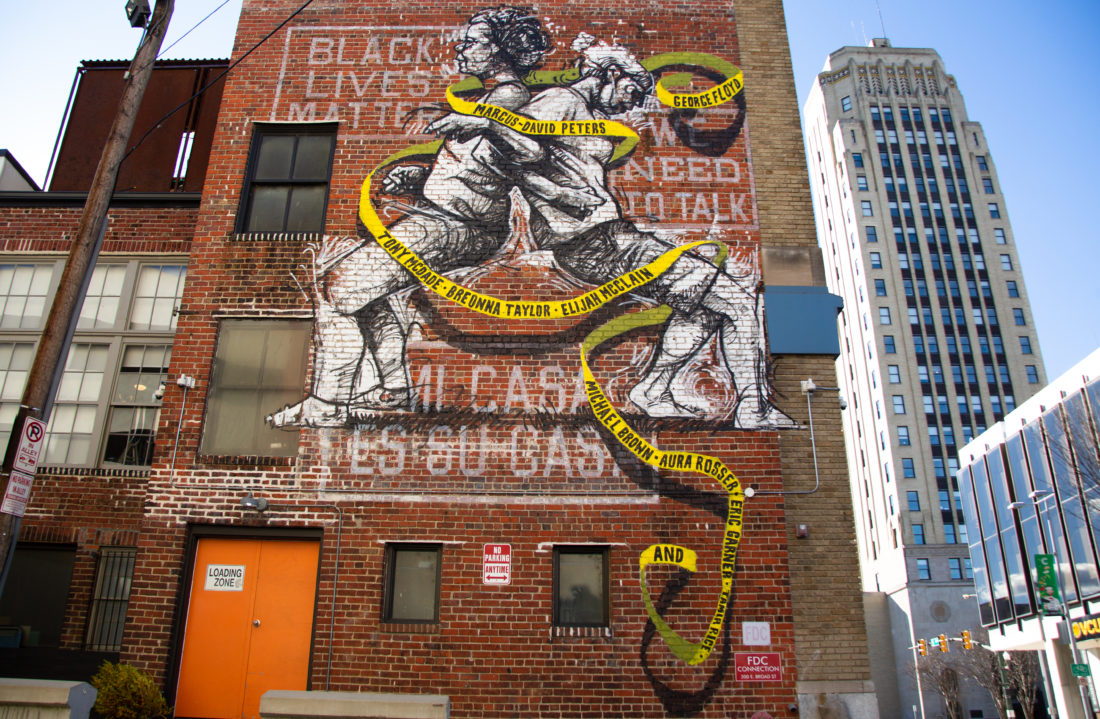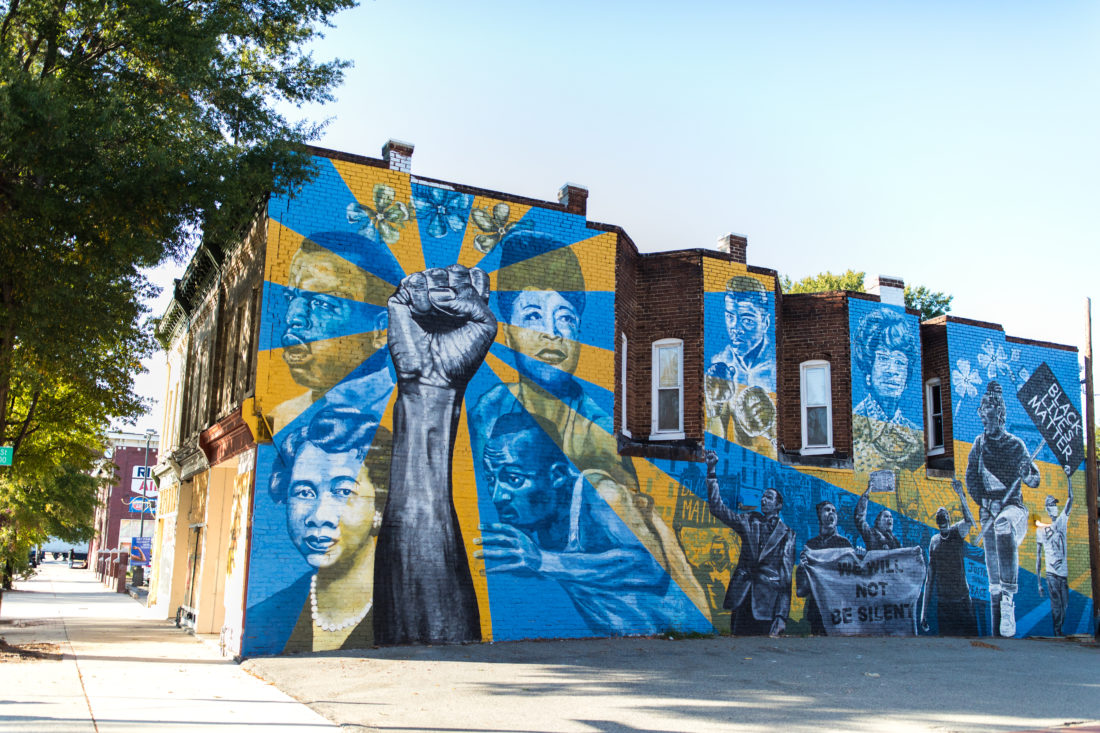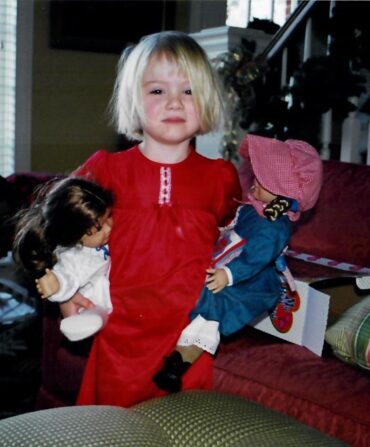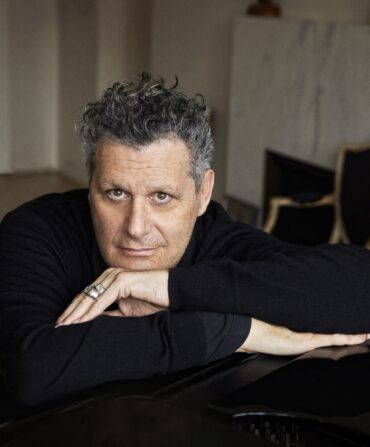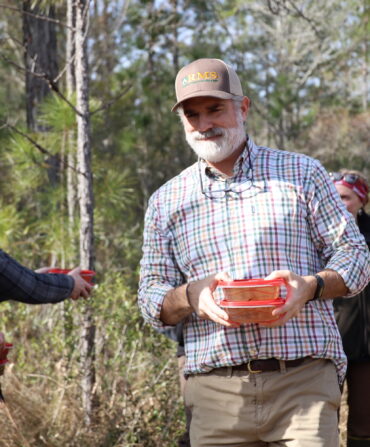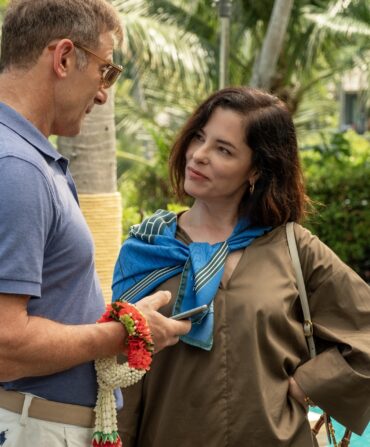Hamilton Glass, an architect-turned-artist and community activist, has transformed Virginia’s capital one building at a time with his collaborative art series, Mending Walls. “I hesitate to even call this a public art project, because what it’s really about is having a conversation,” he says.
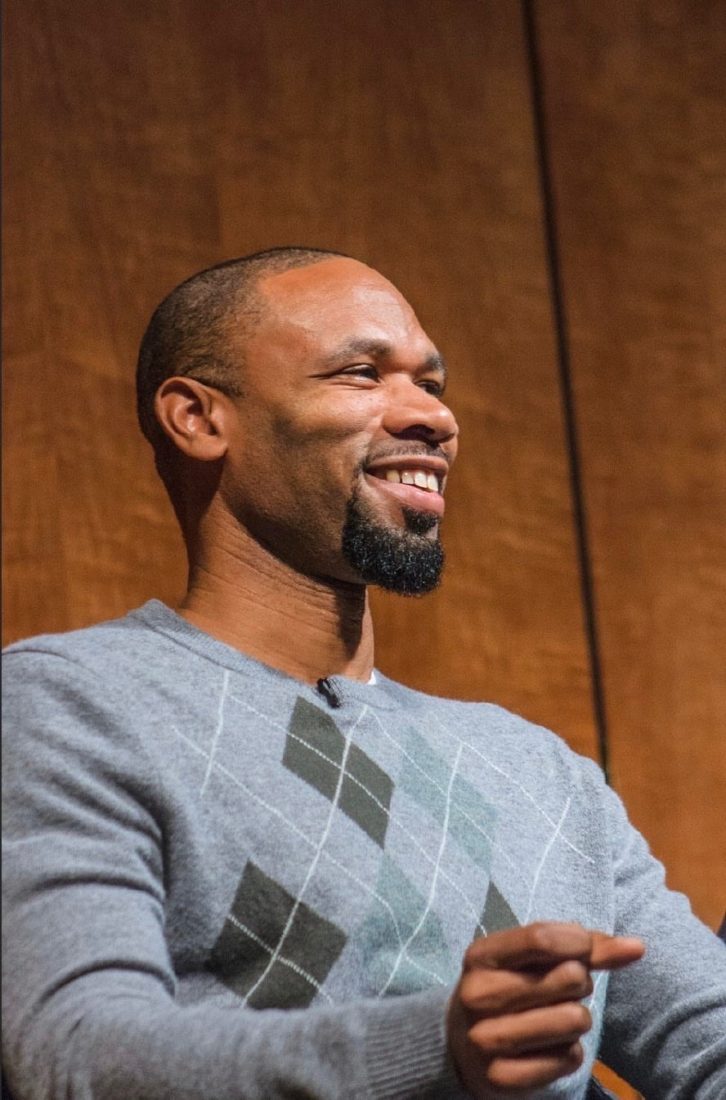
So far, that conversation has brought more than thirty artists from different cultures and backgrounds together to produce nearly two dozen multi-story mural meditations on healing and connection. The response has been overwhelming. Not only have other cities around the country reached out to Glass to consult on similar installations, PBS filmed a documentary about Mending Walls that premiered in September and can be viewed now.
Glass himself grew up in Philadelphia, Pennsylvania, but identifies as a life-long part-time Richmonder. “I was that kid who was bused off to see his grandmother in the summer,” Glass says. His annual visits to Richmond allowed him to watch the city evolve before he moved there for good in 2007. “I don’t feel like I’m the representative of Richmond,” he admits. “But I feel like I have partnered with and know a lot of the people here, and I feel like I’ve used my talent and others have used theirs to help amplify the city.”
If Glass could have an entire day to fill with his favorite Richmond experiences, he says it would look a little something like this:
Breakfast
At Beet Box on Cary Street, Glass orders the fittingly named “Paint the Town” juice. “It’s actually pink,” he says, from the mix of beets, carrots, pineapple, lemon, and ginger.
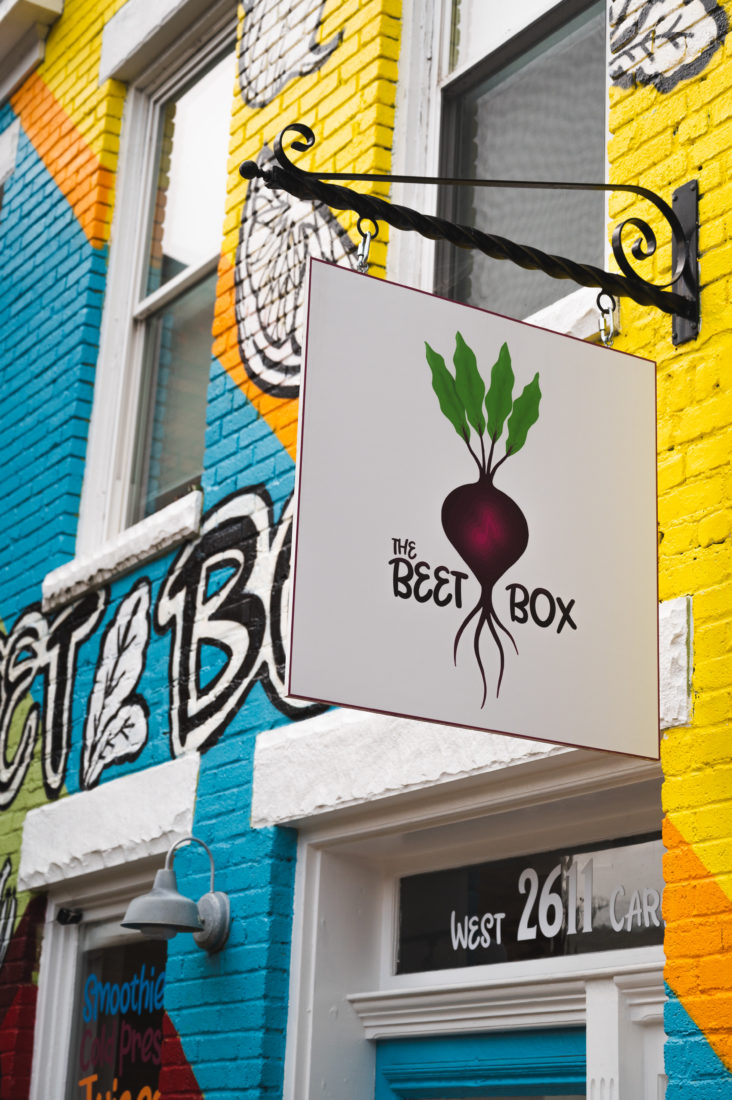
History Lesson
“Jackson Ward was nicknamed ‘The Harlem of the South,’” says Glass, describing the city’s once thriving African-American quarter of commerce. If you want to understand Richmond, Glass says, it’s important to explore this area. “It’s where Maggie L. Walker had her first bank. It’s where the Hippodrome Theater lives. It’s where there was a booming spot for the Chitlin’ Circuit,” Glass says. “All of the crafters and the makers in the community lived in Jackson Ward.” A statue at the south corner of the triangular Bojangles Park honors the locally born tap dancer Bill “Bojangles” Robinson. “The area is a lot smaller than it used to be, but it’s still the downtown heart of Richmond,” says Glass, who recommends stopping at the Black History Museum and the Maggie L. Walker National Historic Site to learn about the Black Richmonder who was a bank president and newspaper editor during the Jim Crow era.
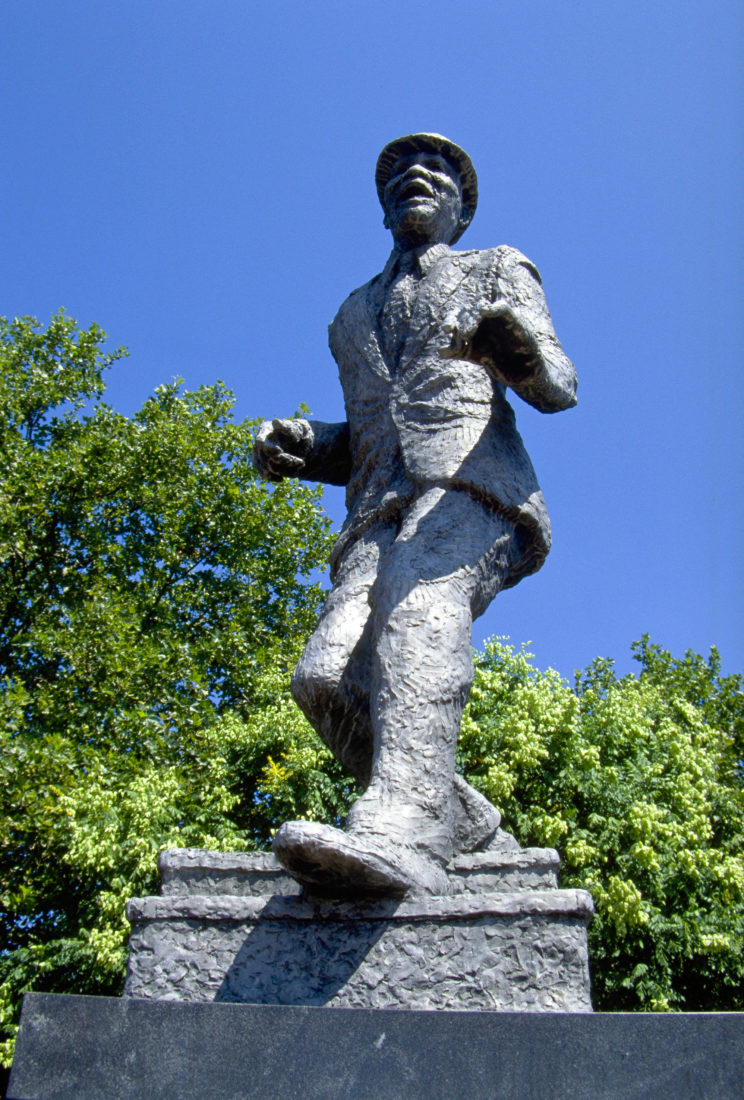
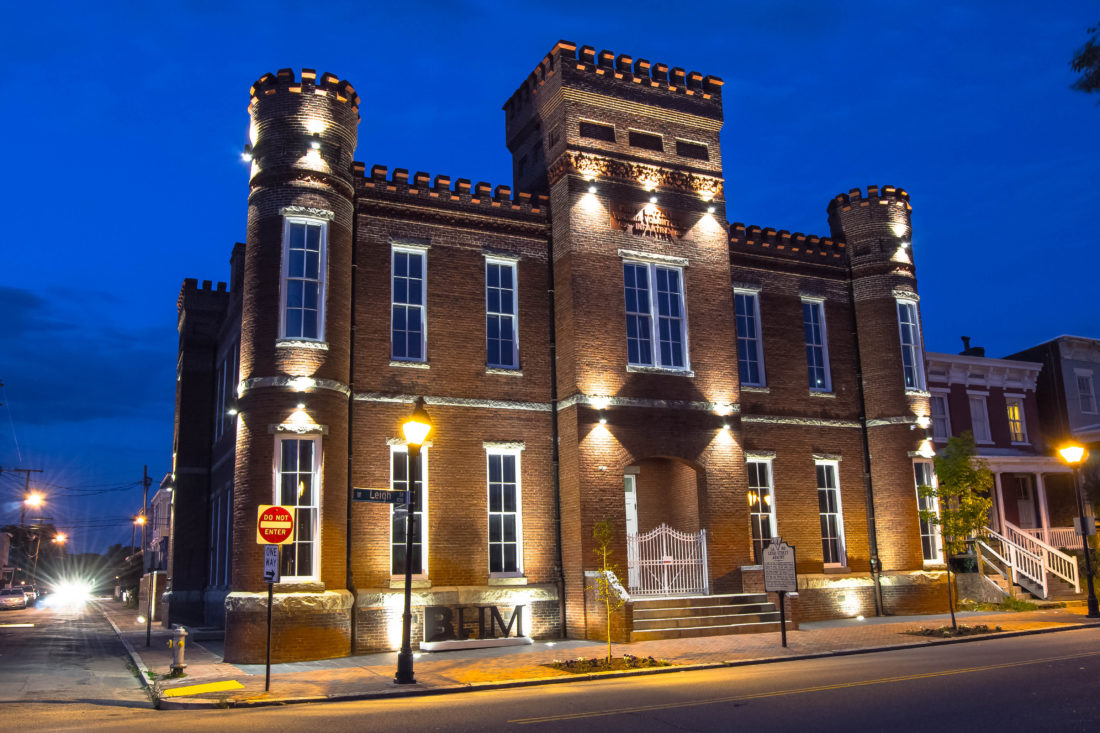
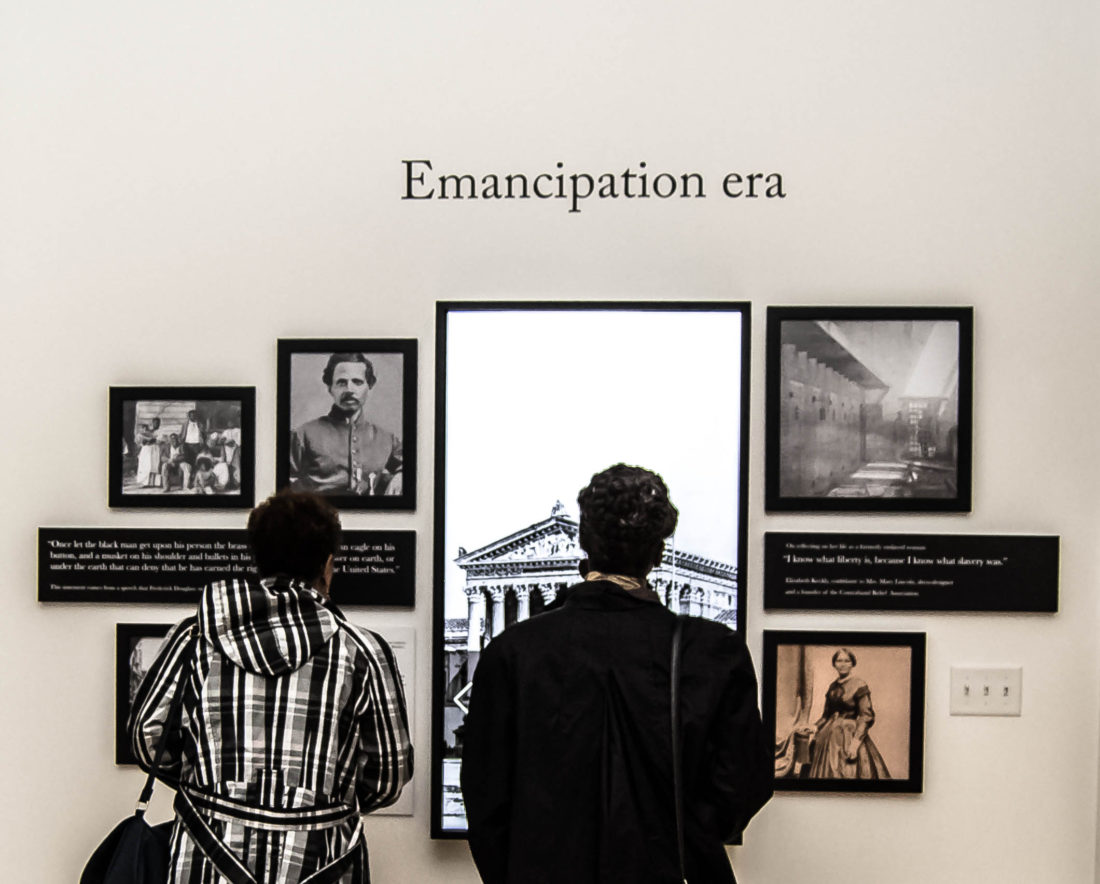
Lunch
“I love ramen. I’m a really big noodle head, I guess you would call me. I probably eat at Grace Noodle once a week.” At the Main Street ramen shop, Glass goes for the spicy garlic shrimp nearly every time.
Take a Spin Through Scott’s Addition
“The opposite of Jackson Ward is Scott’s Addition,” Glass says. “That’s where all the new energy is.” A former industrial district named for General Winfield Scott who owned a vast estate there in the early 1800s, it’s now filled with breweries and cideries. “It’s the nightlife area,” Glass says. It’s also home to Tang & Biscuit, the self-proclaimed “world’s largest indoor shuffleboard bar.”
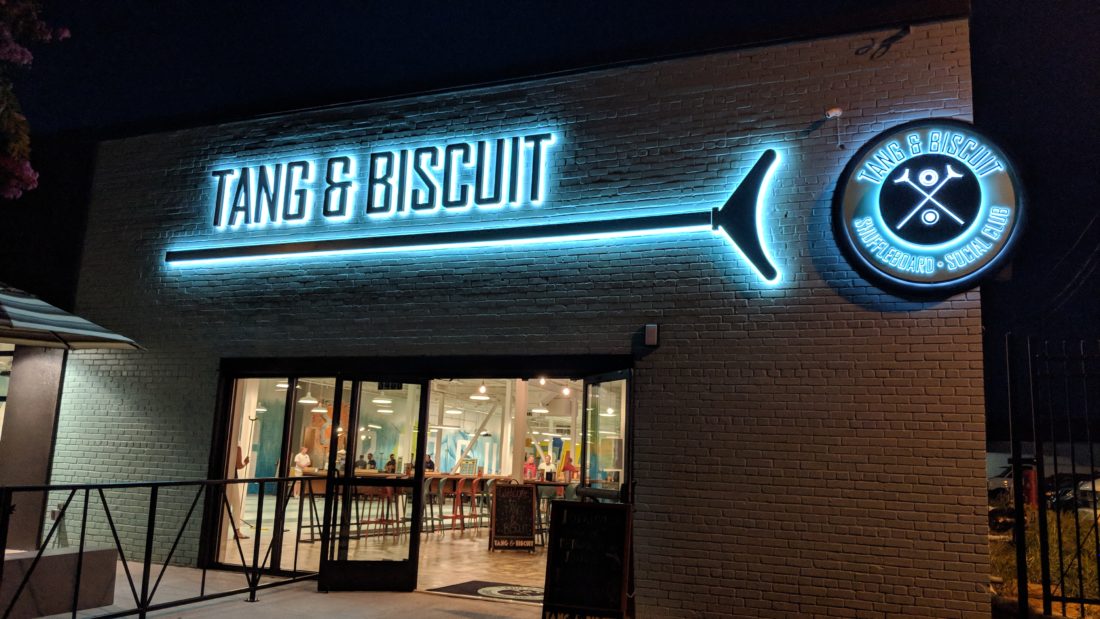
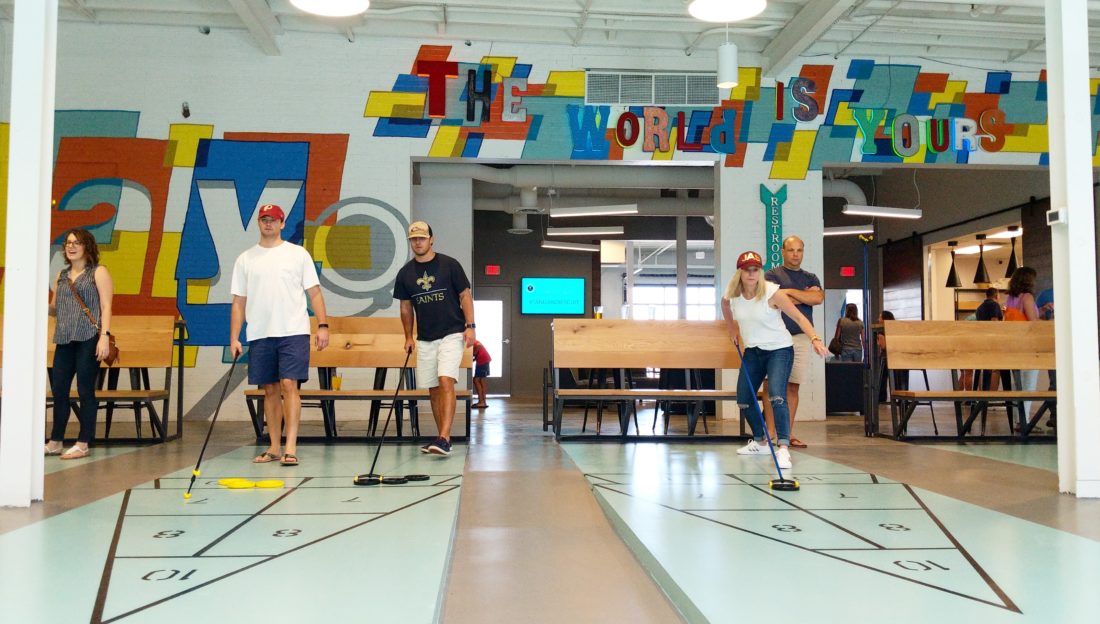
Dinner
When a celebration is in order, Glass says you can’t go wrong by making a reservation at the lauded L’Opossum. The modern French restaurant in the Oregon Hill neighborhood has earned James Beard nods and local devotion. “It’s amazing,” Glass says. “It’s really hard to get a reservation, but we love it there.”
Mural Tour
Check out the online map to visit the Mending Walls murals by foot or car—or take a Bike and Brunch Mural tour. The casual guided ride rolls through the Museum District and Jackson Ward.
